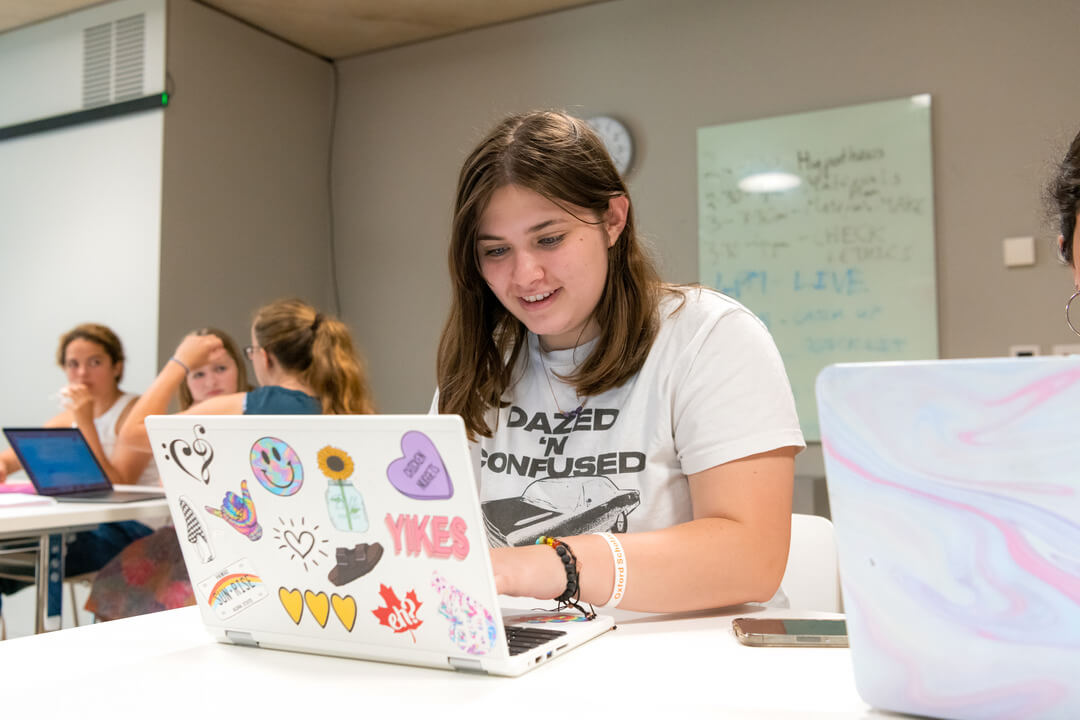How to Write a Creative Essay

Creativity is a key aspect of producing a memorable and engaging essay, so understanding how to write creatively is a valuable academic skill that’s beneficial across a range of subjects.
With that in mind, we’ve put together a comprehensive guide on how to write a creative essay. If you have an assignment and don’t know where to start, look no further!
Understanding Creative Essays
A creative essay isn’t bound by the rigid forms, structures and styles usually required in an academic essay. These essays are often used to explore personal experiences, emotions and imaginative narratives.
When crafting a creative essay, it’s essential to be original – think outside the box and don’t be afraid to bend the rules! Creative essays can include personal narratives, descriptive essays and fictional stories. These pieces of writing require imagination, and should be exciting and interesting to read.
Choosing a Compelling Topic
So how do you start? The first thing to do is choose a topic that you find engaging and inspiring. Write down any ideas that initially come to mind, and follow your thoughts until you reach something substantial. Noting down some bullet points or making a quick mind map can also be useful in bringing together different strands of topics into one cohesive idea.
It may also be helpful to reflect on any significant personal experiences you’ve had. If there’s a specific event that had an emotional impact on you, this can be a perfect source of inspiration for a creative essay.
You might like to evaluate potential essay topics based on their emotional impact, relevance and potential for creative exploration. Consider how your topic will impact a reader, but don’t forget to consider how it has impacted you.
Crafting a Captivating Introduction
A strong opening is important to hook your reader’s attention. There are multiple strategies you can use to create an engaging introduction. You could begin with a captivating anecdote, by asking a thought-provoking question or setting a vivid scene. Do your best to draw in your reader right from the start.
It’s also essential to start as you mean to go on. A strong opening establishes the tone and sets the stage for the rest of the essay. If you begin with a captivating hook, be sure to stay consistent and match the tone throughout the whole piece of writing.
Developing a Compelling Narrative
Knowing the key elements of storytelling is a good place to start when developing a compelling narrative. Think about your plot, your characters, the setting, and any important conflicts that are going to structure the narrative.
Try to make your characters multi-faceted – they should have multiple elements that define their identities. Don’t just give a character one personality trait; make them realistic! If you imagine your characters as real people, or even take inspiration from people you know, your creative writing will be genuine and compelling.
It’s also important to have moments of tension and conflict within your narrative. Building suspense is a great way to keep your reader captivated. Tension can be created through shorter sentences, exclamatives and a fast pace. Remember to use a variety of paces to keep your narrative engaging – switching things up so the reader can’t predict what’s going to happen next is an effective way to hold interest.
However, you should still be able to maintain a coherent plot. You might find it helpful to work out where you’re going before you start. If you have a plan of the plot structure – however vague! – your narrative will be smoother and flow better. You should know how your creative essay will end before you start it.
The addition of descriptive language and sensory details can also be a useful tool to immerse a reader in your essay. Try to use adventurous language, and describe things vividly to create your intended atmosphere.
Using Imagery and Figurative Language
Being creative with the imagery and descriptive language you use is also very important. You can use lots of different literary devices such as similes, metaphors, personification and symbolism to create a captivating essay, but be sure not to overdo it!
Using figurative language tactically ensures it stands out, so equally if your essay is crowded with over-elaborate imagery then it can start to get waffly. You don’t want to lose your strong plot-line or authentic characters.
However, when used effectively, carefully-inserted metaphors and symbolism can evoke powerful emotions and create a vivid scene, resulting in an essay that reads beautifully.
Maintaining a Cohesive Structure
Before you start writing, make sure your ideas are organised in a way that flows logically. Once you know where your essay is going, you can start to incorporate descriptive techniques. If you’re attempting to present an argument, then start with an introduction and finish with a conclusion to maintain control over your argument or narrative.
When moving between paragraphs and sections, try to keep your transitions as smooth as possible. Smooth transitions between paragraphs ensure coherence, so try to avoid jumping from point to point without connecting them.

Showcasing Personal Voice and Style
When writing your creative essay, try to showcase your unique voice by being authentic and as original as you can. It can also be fun to experiment with style.
Change up your sentence structures!
Use new and bold words, and create exciting rhythms!
If you have a distinct personal voice, your work will be sure to stand out.
“Incorporating some dialogue can also be a good way to draw readers in.”
“You should try to use varying sentence lengths as well.”
“Definitely!”
Overall, the most important thing to showcase when writing a creative essay is allowing your individuality to shine through. Write in a way that is bold and different, and show the reader what makes you stand out as a writer.
Editing and Revising
Once you’ve finished writing your creative essay, your work isn’t finished! Editing and revising are both really important elements of the creative process. Try reading your piece aloud to gain a new perspective on the flow of your sentences, and seek feedback from others. Don’t forget to also check for any grammar and spelling errors that you may have missed during the writing process.
Multiple rounds of revision can help to refine the essay and enhance its overall impact. This means that you don’t have to be nitpicky or pedantic when you write your first draft; you’re free to express your ideas creatively and messily. Then you can put on your editing hat. Reread, rewrite and correct as much as you can until you are left with your masterpiece!
Writing creative essays should be fun and enjoyable. It’s a great way to embrace your creativity and experiment with different writing techniques. If you want to practise your essay-writing skills, you can take part in the OxBright essay competition to showcase your skills!

By Jessica Mason
Looking to improve your creative writing?
Recommended articles
OxBright Tutors Share Their Top Tips for High School Graduates
Finishing high school can be a really intimidating juncture – you’re leaving the security of a routine you’ve followed for five plus years, and you’re faced with more options and less structure than ever before. Oh, and your decisions now can shape your future in a...
Which Career Is the Best Fit for Me?
Choosing your career path is one of the first big steps you’ll take as a young adult, so it can often be a daunting prospect. However, the possibilities are endless, and as long as you base your choices on your personal preferences, passions and interests, your...
How to Make a Study Schedule That Actually Works
Studying can sometimes feel like a daunting task, no matter how old you are or what level you’re studying at. You might be left thinking: How can I balance academics with my other commitments? How do I stay consistent with a study schedule? Is there a “good” or...



